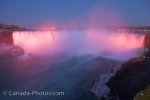Nunavut Photos
Photographers are drawn to the pristine northern wilderness of Nunavut, to take pictures of the dramatic scenery and wildlife, and explore the art and traditions of Inuit culture. Below is a selection of our Nunavut Photos and Pictures. (There are 1 photo)
Nunavut, meaning "land," is Canada's largest and newest territory, created on April 1, 1999. Nunavut is situated west of the Northwest Territories, and directly north of the province of Manitoba, and includes many islands in the Arctic Ocean archipelago, such as Ellesmere and Baffin Islands.
Nunavut is divided into three regions, Kitikmeot is the western portion, Kivalliq takes up the south-central land mass, and Quikiqtaaluk occupies the eastern section, including Baffin Island and many of the northernmost islands.
29,692 people live in Nunavut, the majority of which are Inuit. ... ...continue under photos...
Interesting Photo galleries related to "Nunavut Photos"
Polar Bear family along the Nunavut coastline.
Polar Bear mom with two cubs walking over the ice along the Nunavut coastline. Polar Bears, Icefloe, Nunavut, Ursus maritimus Please make sure to see our photo gallery Canada animals with more creatures from Canada and more polar bear pictures.
... The Inuit way of life is ancient, going back thousands of years. Inuit art and culture is very much alive and celebrated today.
There are 28 communities in Nunavut, the largest being the capital city of Iqualuit, meaning "place of many fish." Iqualuit is located at the mouth of Forbisher Bay, along the south-east coast of Baffin Island. The most northerly community is Grise Fiord, located on the edge of Ellesmere Island. At a certain time of year, one can experience the "midnight sun," or 24 hours of daylight, in this community.
Nunavut is a great place for wildlife viewing and photography. Large mammals such as caribou, muskoxen, polar bears, arctic foxes, seals and whales can be seen here. The arctic tundra is a tapestry of miniature wildflowers, lichens and mosses.
Recreational opportunities abound such as dog sledding, trekking, canoeing, kayaking, and fishing or hunting. One can learn about Inuit traditions, such as ice fishing, or building an igloo.
Nunavuts wilderness, wildlife and people provide endless, exciting opportunities for a visitor to Canadas north.


